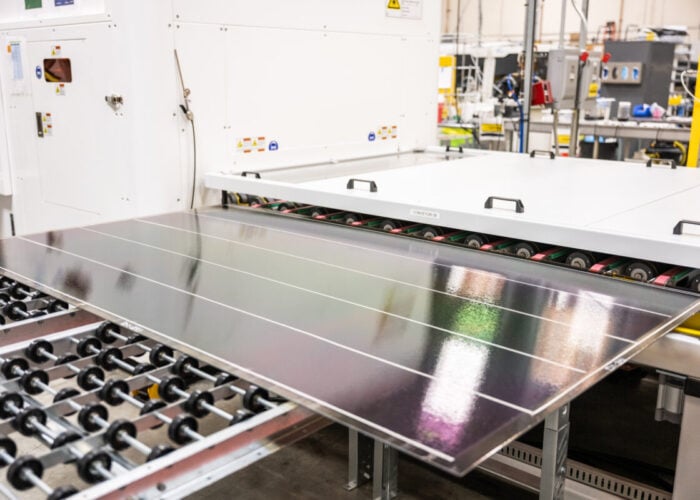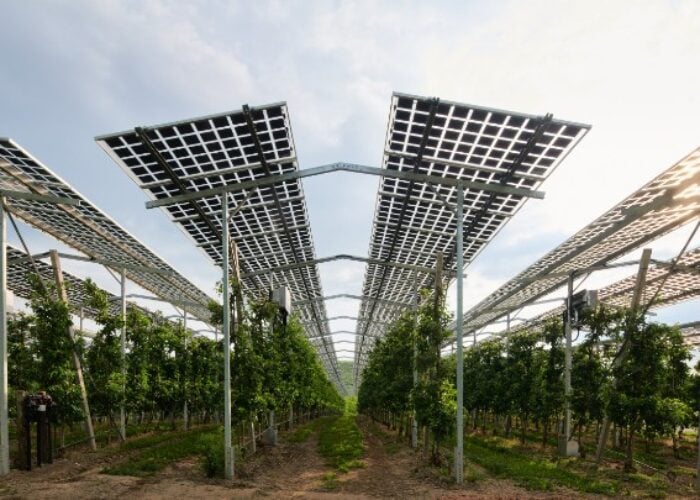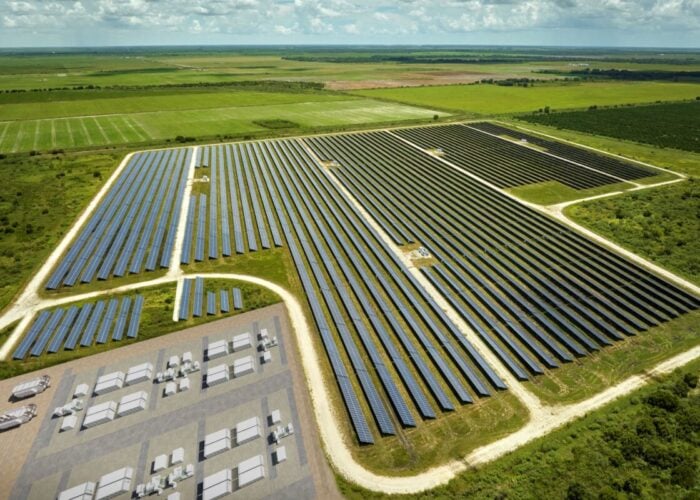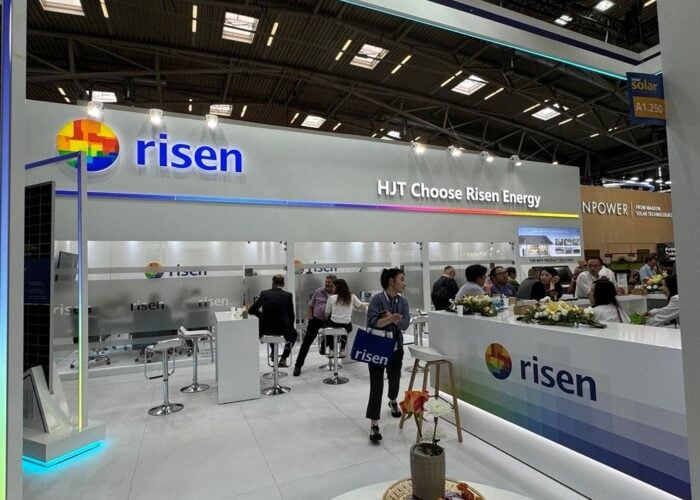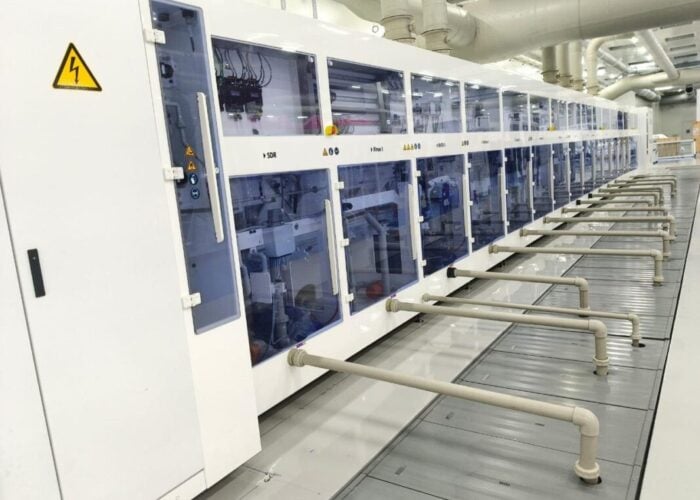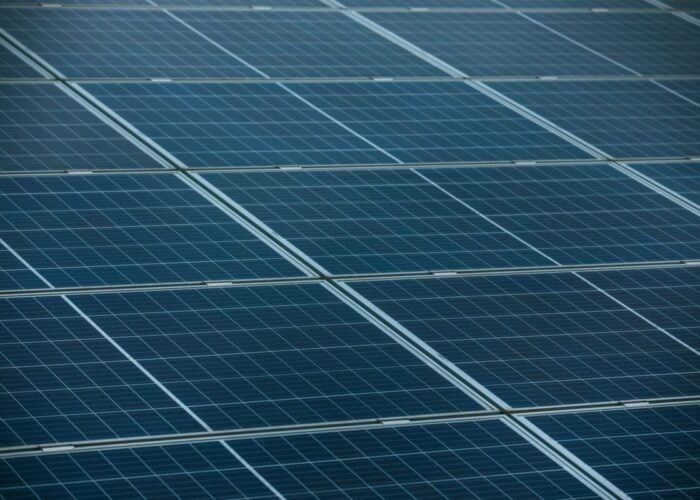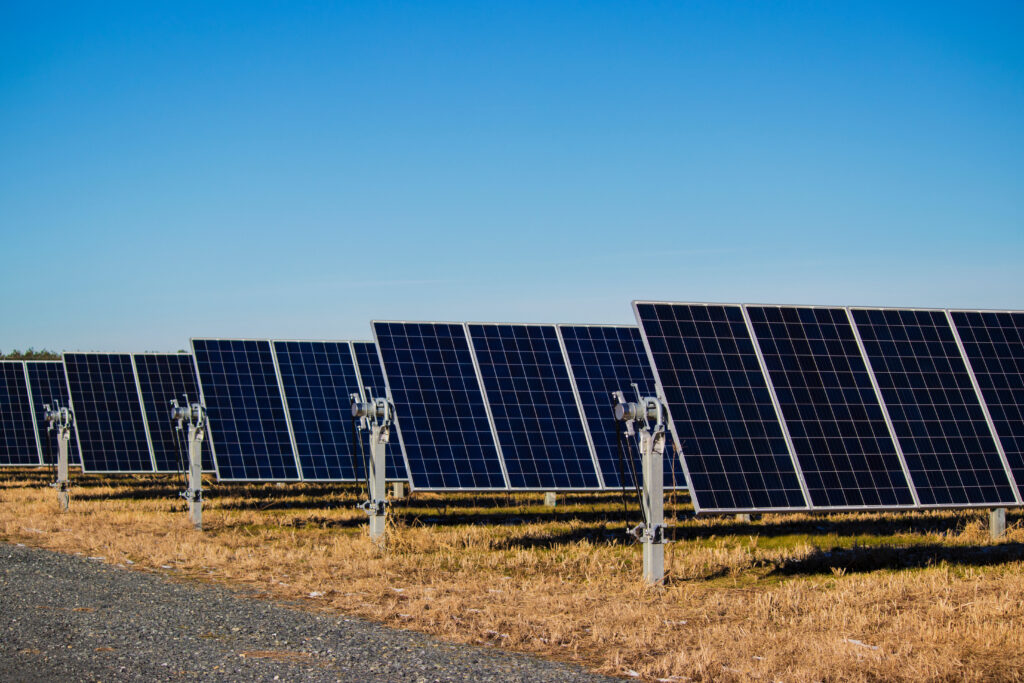
Browsing the headlines in recent years, most PV module technology announcements are a cause for celebration. At Kiwa PVEL, we have likewise noted some positive trends in PV performance in our Product Qualification Program (PQP) testing. Higher module efficiencies and energy yields, along with improved reliability, have been observed in our extended reliability and performance testing of modules over the years.
However, we have continually seen that the test results on individual bill of materials (BOM) combinations vary across our tests. This is often the case with the introduction of new module technologies; some BOMs perform strongly, while others show room for improvement until the technology has fully matured.
Unlock unlimited access for 12 whole months of distinctive global analysis
Photovoltaics International is now included.
- Regular insight and analysis of the industry’s biggest developments
- In-depth interviews with the industry’s leading figures
- Unlimited digital access to the PV Tech Power journal catalogue
- Unlimited digital access to the Photovoltaics International journal catalogue
- Access to more than 1,000 technical papers
- Discounts on Solar Media’s portfolio of events, in-person and virtual
An examination of recent test data from Kiwa PVEL provides insights into some emerging failure modes. As buyers look to procure the latest and greatest in commercially available modules, it’s worth exploring these ‘outliers’ in test results. Understanding these potentially critical reliability issues and selecting BOMs that are unaffected can help mitigate procuring PV modules that may negatively impact your project’s performance.
A look at a recent thermal cycling result
Kiwa PVEL PQP’s thermal cycling (TC) test assesses a PV module’s ability to endure changes in temperature over 600 cycles from -40 degrees Celsius to 85 degrees Celsius. The IEC certification TC test is only 200 cycles. This test is field relevant as typically the places that have very high solar resource, such as deserts, also tend to be places where temperatures are much lower at night than during the day.
PV module components and layers expand or contract at different rates as temperatures change, and these differences in thermal expansion coefficients can create stresses internal to the module. For susceptible modules, these stresses can result in damage between the cell metallisation and other cell layers; between the cell solder bonds and the cell interconnects; and/or to the soldering within the junction boxes.
In a recent example from Kiwa PVEL’s TC testing, a tunnel oxide passivated contact (TOPCon) BOM suffered significant power loss following just TC400, with an average degradation >6% for the two identical modules being tested. For context, 86% of the >20 TOPCon BOMs that have completed Kiwa PVEL’s TC600 test have less than 2% power loss.
This module’s BOM employed a glass/backsheet construction with a combination of POE and EVA from a well-established encapsulant supplier. The EL image after TC400, below, shows darker bands parallel to the cells long edge, located after the last solder bond, indicating areas of higher resistance. This anomaly has been seen in other modules after TC testing, but this case was significantly worse.
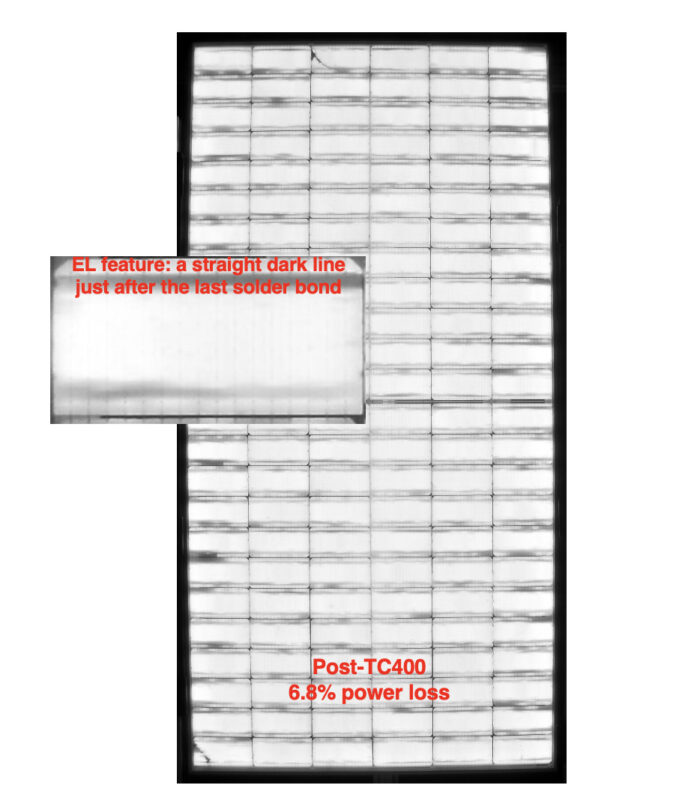
Who ordered the champagne?
In the Kiwa PVEL PQP’s Damp Heat (DH) testing, we place PV modules in climate chambers set to 85 degrees Celsius and 85% relative humidity for 2,000 hours to test for long-term degradation and failure modes that can occur in high temperatures and high humidity conditions. The IEC certification DH test is 1,000 hours.
For susceptible modules, the moisture and heat during this test can weaken the materials binding the module together. Low quality components and/or substandard lamination processes can result in moisture ingress into the laminate and corrosion of internal materials. Potential performance loss and safety issues can follow not long after.
In a recent outlier example from DH testing, one BOM exhibited bubbles and delamination following DH2000 testing. This failure mode is sometimes called ‘champagne bubbles’ but there is nothing to celebrate here, as they can be an indication of eventual delamination or lead to electrical ground faults between the current carrying parts of the module, through the bubbles to the metallic frame.
The module manufacturer opted to complete retests, something clearly marked in Kiwa PVEL’s test reports, and similar bubbles were seen after DH1000 following two attempts at retesting, as shown below. While the root cause is not fully understood at the time of writing, it is likely due to the specific combination of EVA and POE used in the module and/or the lamination process conditions. Poorly stored or expired encapsulant could also contribute to this module failure mode.
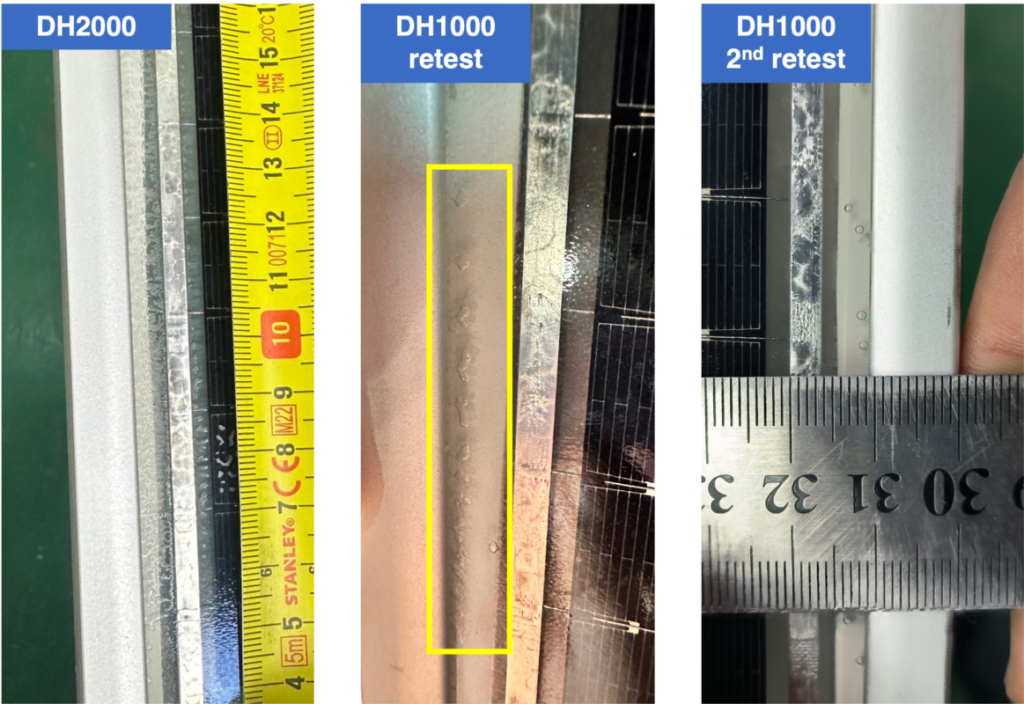
The past few years have seen a significant diversification in PV module encapsulation strategies, as seen in the graph below, driven in part by incoming TOPCon and heterojunction (HJT) cell technologies. As new combinations, such as POE/EVA, or even new recipes, such as UV light down-conversion encapsulant, are being put in the field, we have observed several concerning delamination occurrences. Although potential outliers, these deserve proper attention and failure analysis to identify the root causes.
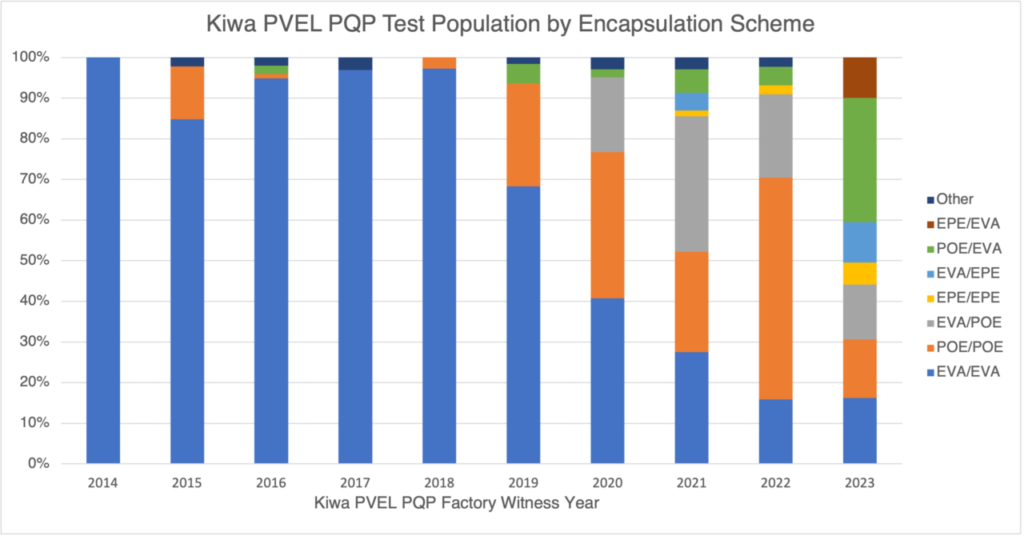
Following procurement best practices
Kiwa PVEL’s PQP testing has revealed a diverse range of reliability outcomes for solar modules, and while the overall results are encouraging, there is still variability in module performance. Following the Kiwa Group’s recommended procurement best practices for PV modules helps ensure your module investment performs to expectations.
Starting at the factory, factory audits of manufacturers’ production lines should be undertaken before procurement to ensure quality standards are being met. PQP testing such as that offered by Kiwa PVEL provides an impartial assessment of module BOM combinations and designs, verifying quality and identifying potential issues before production.
Production oversight and pre-shipment inspection ensure the manufacturer’s quality control plan is being followed during mass production and that defects are properly quarantined and addressed. And further validating quality and performance through pre- or post-shipment batch testing helps prove manufacturing consistency.
Solar technology trends may be something to celebrate, just don’t forget about mitigation steps to avoid the outliers.
Jean-Nicolas Jaubert is the director of China operations at Kiwa PVEL, and Tristan Erion-Lorico is a VP of sales and marketing at Kiwa PVEL.

